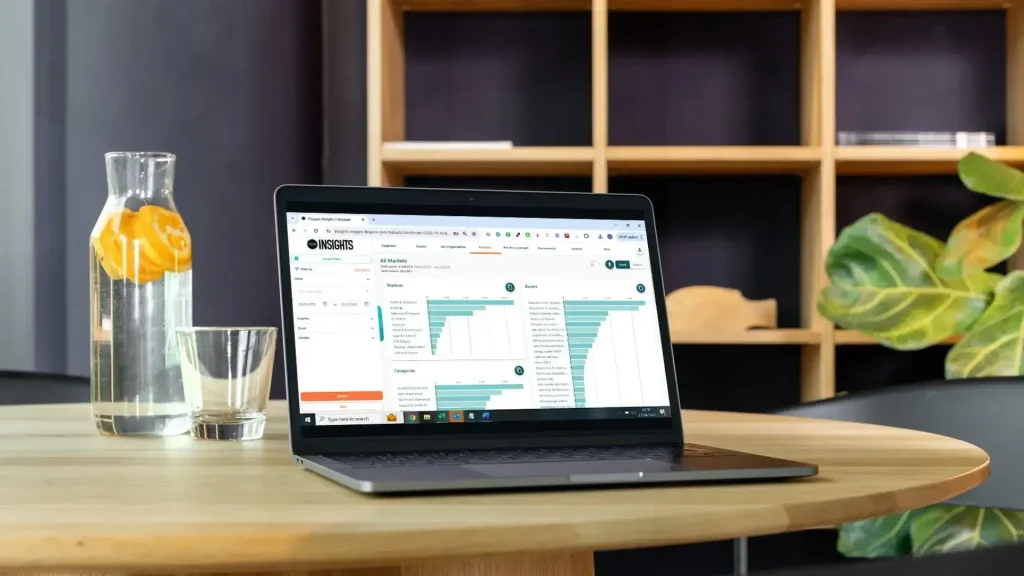Faced with constant financial scrutiny and high public expectations, local authorities must maximise value for their communities. This requires innovative procurement methods, using data-driven insights and collaborative efforts to achieve efficiency and uncover new opportunities.
One transformative tool is the spend efficiency metric. This straightforward yet powerful measure helps buyers and suppliers identify areas for potential optimisation. Debbie Lyons, Procurement Solution Lead at Oxygen, explains how this metric, along with others, helps procurement teams manage their time and resources better.
Understanding the Spend Efficiency Metric
A focus on spend efficiency can guide councils in making better data-driven decisions, identifying cost-saving opportunities, and fostering a more efficient market. Central to this metric is the spend per capita benchmark, calculated by dividing their third-party spend into the population within the council’s area. This key indicator helps local authorities, with similar needs, compare their purchasing efficiency with peers.

An Example of Spend Efficiency – English Councils Spend on ICT Broken into Decile Cohorts, based on FY 22/23 spend data and ONS 2022 population estimates.
By analysing spend data across specific markets and categories, organisations can identify inefficiencies, pinpoint cost-saving measures, and establish common performance benchmarks.
Real-World Applications of Spend Efficiency Metrics
Take a UK local authority seeking to improve its procurement processes. By evaluating its spend data using the spend per capita benchmark, the authority might find a significant portion of its budget underperforms compared to the national average, similarly sized or neighbouring councils. This insight can then lead to a closer examination of individual contracts, comparing them with similar services bought elsewhere, helping the authority reallocate resources more effectively and make informed decisions, resulting in cost savings and better service delivery.
In another case, a city council might use spend efficiency metrics to evaluate infrastructure project spending. By comparing the cost per mile of road maintenance against other councils, they can identify discrepancies and find more cost-effective contractors or processes. This approach not only highlights areas for improvement but also encourages contractors to offer better value.
Driving Strategic Decision-Making with Data
Incorporating spend efficiency metrics into procurement processes empowers organisations to make informed decisions that yield tangible results. By combining a comprehensive view of spend data with performance insights, organisations can prioritise initiatives, allocate resources effectively, and focus on high-potential areas for optimisation. This ensures efforts are directed towards maximising value and achieving best value outcomes.
Enhancing Collaboration Through Transparency
One key benefit of spend efficiency metrics is increased transparency in procurement. When buyers, suppliers, and oversight bodies access the same data, it fosters accountability and trust. Suppliers, knowing their performance is being objectively measured, are more likely to offer competitive pricing and innovative solutions.
For instance, a supplier comparing their efficiency with similar service providers might realise they need to streamline processes or reduce waste. Implementing these efficiency measures can lower costs, reduce prices for buying authorities, and provide a competitive edge. This shows how the spend efficiency metric helps both buyers and suppliers make strategic decisions that benefit their organisations and the market as a whole.
Integrating Spend Efficiency Metrics with Other KPIs
While the spend per capita benchmark provides a broad view of procurement efficiency, integrating it with other KPIs offers a more nuanced perspective. Metrics like on-time delivery rates, contract compliance, and supplier performance ratings, when combined with spend data, give a holistic view of procurement effectiveness.
For example, if a supplier offers the lowest prices but frequently delivers late, procurement teams can weigh cost savings against potential disruptions. This balanced approach ensures decisions consider both cost and reliability.
How Councils are Already Successfully Using Spend-Based Metrics
Several public sector organisations have successfully used spend-based metrics to improve procurement. For example, one council in the North East used Oxygen Insights data to benchmark their activity against neighbouring councils, identifying areas of significant variance which they then used to direct their procurement activity and expertise accordingly.
Another Midlands local authority spending several hundred million pounds per year with third parties used spend metrics to identify opportunities to realise savings from their existing contract arrangements, negotiating better terms with suppliers to address gaps in their funding. Regular reviews such as these can allow procurement teams to identify areas for potential optimisation and enhance service provision.
Building a Culture of Continuous Improvement
Using spend efficiency metrics fosters a culture of continuous improvement in public sector organisations. Regularly reviewing and updating these metrics helps procurement teams stay attuned to market changes and adapt strategies accordingly. This proactive approach ensures procurement practices evolve with new challenges and opportunities.
For example, a local authority continuously monitoring its spend efficiency metrics might identify emerging trends driving improved performance elsewhere. By adopting these innovative solutions, the authority can enhance operational efficiency and meet evolving needs.
Encouraging Innovation Through Competitive Benchmarking
Competitive benchmarking is another powerful aspect of spend efficiency metrics. Comparing performance with peers helps councils identify best practices and set ambitious improvement targets. By embracing the best ideas from other local authorities, councils can drive innovation and rapidly adopt advanced procurement strategies.
For instance, multiple councils participating in a regional benchmarking initiative can learn from each other’s successes and challenges. This collaborative approach fosters a sense of community and collective progress, benefiting the entire public sector.
Harnessing Spend Efficiency for Public Benefit
Despite being somewhat unrefined, the spend efficiency metric has a major advantage: it allows procurement teams to view their performance across all categories through a single lens. By using this metric, organisations can focus on areas with the greatest potential for efficiency gains, fostering a culture of continuous improvement.
As public sector organisations face evolving challenges, the importance of spend efficiency metrics will grow. Investing in the necessary tools, technologies, and training to utilise these metrics effectively will be crucial for staying competitive in a resource-constrained environment.
By embracing this data-driven approach, organisations can manage their procurement portfolios confidently. Through the strategic application of spend efficiency metrics, public sector procurement can transform from a reactive process into a proactive force for good, delivering value, efficiency, and innovation for the communities they serve.




